Benis Morton Frank (1925-2007) — Benis Morton Frank served in both World War II and the Korean War, but he may be best known as a Marine Corps historian who founded the Corps’ oral history program. During World War II, Frank deployed to the Pacific, fighting in the Battle of Peleliu in 1944 and the Battle of Okinawa in 1945. During the Korean War, he resumed active duty service as a battalion intelligence officer. After Korea, he continued serving in the Marine Corps Reserve, reaching the rank of captain. In 1961, Frank began working in the Marine Corps’ History and Museum Division, where he developed an oral history program in 1965. From 1991 to 1997, Frank served as the chief historian of the Marine Corps. He also authored several books on Marine Corps history. Today, the oral history program that Frank created continues to preserve and document the history of the Marine Corps. (Columbarium Court 8, Section M3, Column 12, Niche 4)
► Explore the Oral History Section of the Marine Corps History Division, a large collection of interviews that illuminate a vast range of perspectives and experiences.
Jonathan Gifford (1977-2012) — On September 6, 2018, Arlington National Cemetery dedicated Gifford Drive in honor of Gunnery Sergeant Jonathan W. Gifford, a Marine Raider who was killed in action in Afghanistan in 2012. Gifford is the first U.S. Marine, and the second enlisted service member, to be honored with a street name at Arlington. He was posthumously awarded the Navy Cross for his heroic actions in Afghanistan on June 29, 2012. At the time, Gifford was assigned to a Marine Corps Forces Special Operations Command (MARSOC) task force in Afghanistan, in support of Operation Enduring Freedom. During a morning patrol in Badghis Province, he was mortally wounded while leading a counterattack on an all-terrain vehicle to rescue wounded Afghan commandos pinned down under heavy fire. According to his Navy Cross citation, Gifford’s actions “proved decisive in breaking the insurgent defense and allowing the commandos to secure the village.” In his nearly fifteen years of Marine Corps service, Gifford had completed multiple combat deployments and had earned a Bronze Star Medal with Valor (among other decorations). He was also a founding instructor at MARSOC’s Marine Raider Training Center. (Section 60, Grave 10184)
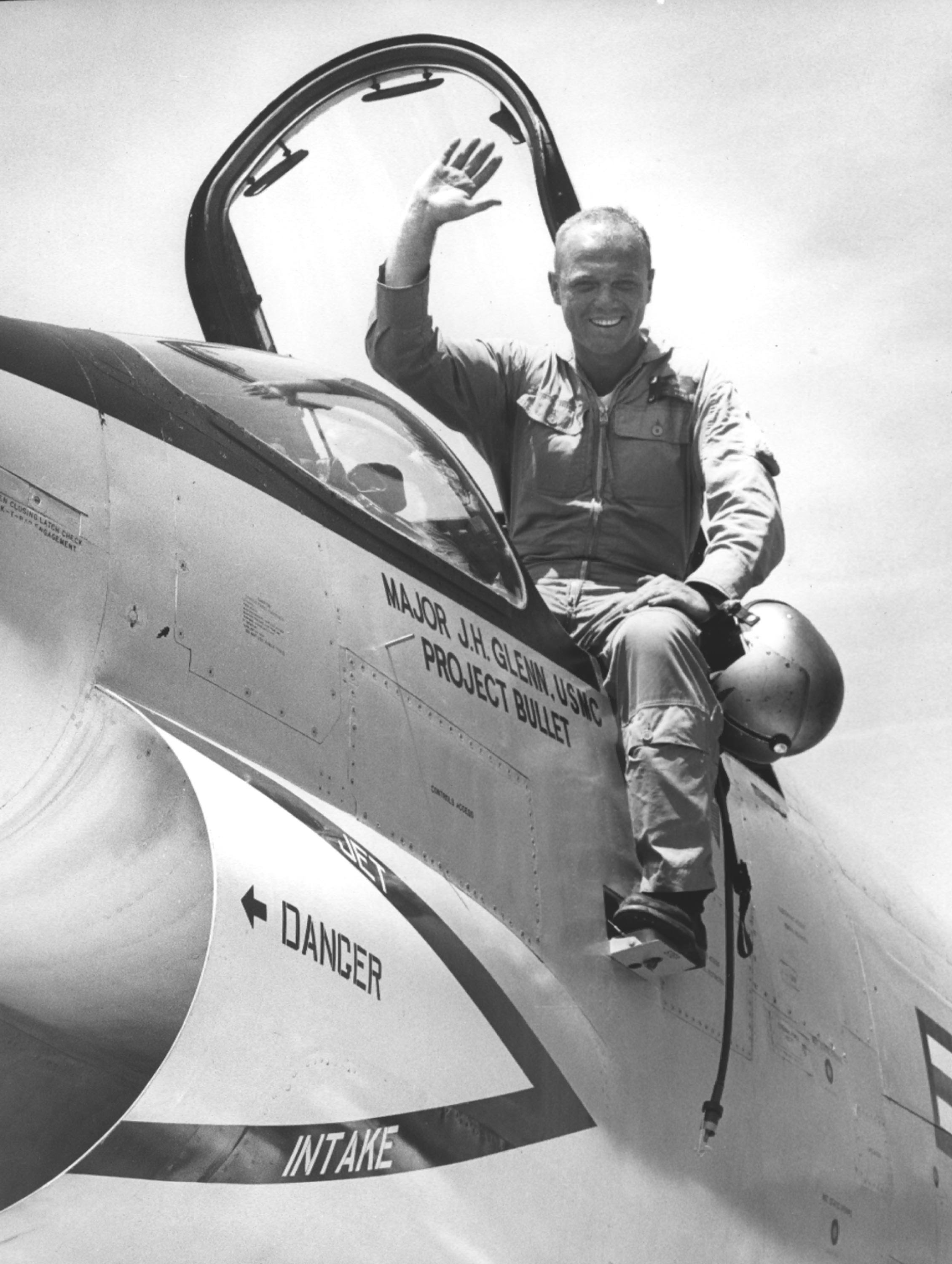
John Herschel Glenn Jr. (1921-2016) — One of NASA's seven original Project Mercury astronauts, John Glenn was the first American to orbit the Earth, circling it three times in his Friendship 7 capsule on February 20, 1962. A decorated fighter pilot, Glenn flew 59 combat missions during World War II and 90 combat missions in Korea. After the Korean War, he served as a naval test pilot, accomplishing the first transcontinental supersonic flight in 1957. After retiring from the Marine Corps in 1965, Glenn pursued a successful career as a businessman and politician. Elected to the Senate in 1974, he served four consecutive terms as a Democrat from Ohio. In 1988, Glenn returned to space on a nine-day Space Shuttle Discovery mission — becoming, at age 77, the oldest person to go to space. John Glenn died in 2016 at the age of 95. His many honors include six Distinguished Flying Crosses, the Air Medal with 18 Clusters, the NASA Distinguished Service Medal and the Congressional Space Medal of Honor. (Section 35, Grave 1543)
► View photos from John Glenn's funeral service, held on April 6, 2017.
 Ira Hayes (1923-1955) — Ira Hayes was one of the six Marines depicted on the Marine Corps War Memorial, raising the American flag on the Japanese island of Iwo Jima. A Pima American Indian (Akimel O’odham), Hayes grew up on the Gila River Reservation in Arizona; his father was a World War I veteran. Hayes enlisted in the Marine Corps Reserve in 1942; he deployed to the Pacific after completing paratrooper training, for which he volunteered. In 1943, he served with a parachute unit in battles at Vella Lavella Island and Bougainville. After transferring to Company E, Second Battalion, in January 1945 he and 70,000 other Marines sailed for the Pacific island of Iwo Jima. The Battle of Iwo Jima (February 19-March 26, 1945) was one of the costliest battles of the Pacific war, with more than 25,000 Americans killed, wounded or missing. On February 23, 1945, Associated Press photographer Joe Rosenthal documented Hayes and five fellow Marines raising the American flag on Mount Suribachi, the island's highest point. The widely published photograph transformed Hayes into an iconic yet reluctant public figure. In May 1945, he and two other survivors embarked on a national war bonds tour. Hayes struggled to reconcile his combat experiences with the admiration he encountered on the tour. Afterward, he returned to the Gila River Reservation, continuing to suffer from survivor’s guilt and post-traumatic stress. At just 32 years old, Hayes was found dead, reportedly from alcohol poisoning and exposure, on January 24, 1955—one month before the 10-year anniversary of the Iwo Jima flag raising. (Section 34, Grave 479-A)
Ira Hayes (1923-1955) — Ira Hayes was one of the six Marines depicted on the Marine Corps War Memorial, raising the American flag on the Japanese island of Iwo Jima. A Pima American Indian (Akimel O’odham), Hayes grew up on the Gila River Reservation in Arizona; his father was a World War I veteran. Hayes enlisted in the Marine Corps Reserve in 1942; he deployed to the Pacific after completing paratrooper training, for which he volunteered. In 1943, he served with a parachute unit in battles at Vella Lavella Island and Bougainville. After transferring to Company E, Second Battalion, in January 1945 he and 70,000 other Marines sailed for the Pacific island of Iwo Jima. The Battle of Iwo Jima (February 19-March 26, 1945) was one of the costliest battles of the Pacific war, with more than 25,000 Americans killed, wounded or missing. On February 23, 1945, Associated Press photographer Joe Rosenthal documented Hayes and five fellow Marines raising the American flag on Mount Suribachi, the island's highest point. The widely published photograph transformed Hayes into an iconic yet reluctant public figure. In May 1945, he and two other survivors embarked on a national war bonds tour. Hayes struggled to reconcile his combat experiences with the admiration he encountered on the tour. Afterward, he returned to the Gila River Reservation, continuing to suffer from survivor’s guilt and post-traumatic stress. At just 32 years old, Hayes was found dead, reportedly from alcohol poisoning and exposure, on January 24, 1955—one month before the 10-year anniversary of the Iwo Jima flag raising. (Section 34, Grave 479-A)
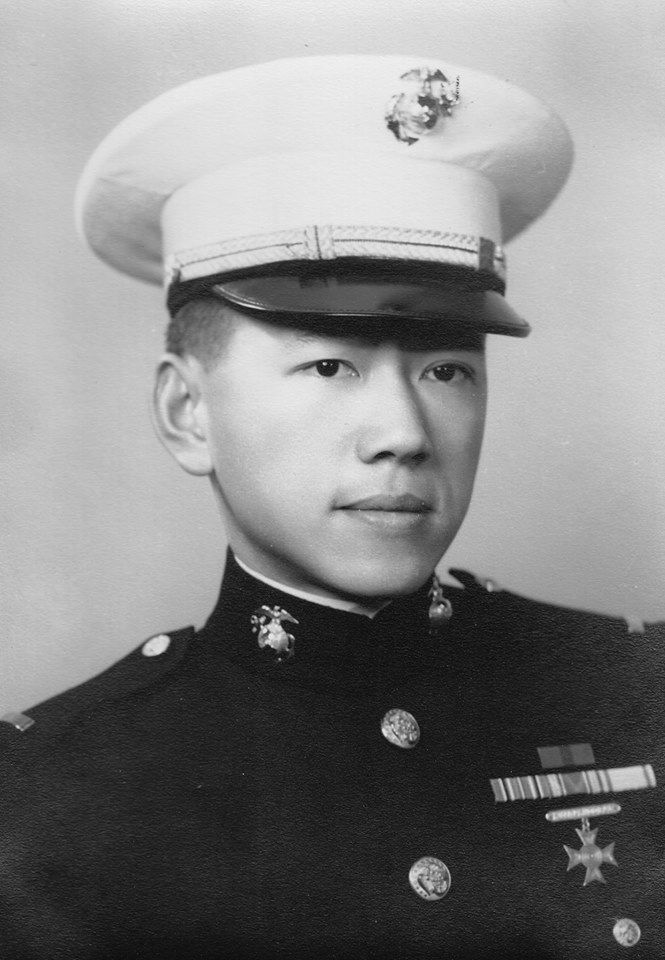 Kurt Chew-Een Lee (1926-2014) — The first Asian American officer in the Marine Corps, Kurt Chew-Een Lee was born in San Francisco to Chinese immigrants. He enlisted in the Marine Corps in 1944 and received his commission in 1946. During the first few months of the Korean War, Lee, then a first lieutenant, commanded a machine gun platoon which advanced deep into northeastern Korea. On the night of November 2, 1950, he trekked into the mountains, amidst blizzard conditions, on a solo reconnaissance mission. Encountering Chinese troops, he began yelling in Mandarin to confuse them and to expose their position. As a result of his actions, his unit was able to take a Chinese base, and he received the Navy Cross for extraordinary heroism. Lee also earned a Silver Star for his actions in the famous Battle of Chosin Reservoir, in which he was severely wounded. Lee subsequently served in the Vietnam War as an intelligence officer, and he retired from the Marines in 1968 at the rank of major. Kurt Chew-Een Lee’s record of service not only honored his country, but also refuted anti-Asian stereotypes: “I wanted to dispel the notion about the Chinese being meek, bland and obsequious,” he told the Los Angeles Times in 2010. (Section 55, Grave 4970)
Kurt Chew-Een Lee (1926-2014) — The first Asian American officer in the Marine Corps, Kurt Chew-Een Lee was born in San Francisco to Chinese immigrants. He enlisted in the Marine Corps in 1944 and received his commission in 1946. During the first few months of the Korean War, Lee, then a first lieutenant, commanded a machine gun platoon which advanced deep into northeastern Korea. On the night of November 2, 1950, he trekked into the mountains, amidst blizzard conditions, on a solo reconnaissance mission. Encountering Chinese troops, he began yelling in Mandarin to confuse them and to expose their position. As a result of his actions, his unit was able to take a Chinese base, and he received the Navy Cross for extraordinary heroism. Lee also earned a Silver Star for his actions in the famous Battle of Chosin Reservoir, in which he was severely wounded. Lee subsequently served in the Vietnam War as an intelligence officer, and he retired from the Marines in 1968 at the rank of major. Kurt Chew-Een Lee’s record of service not only honored his country, but also refuted anti-Asian stereotypes: “I wanted to dispel the notion about the Chinese being meek, bland and obsequious,” he told the Los Angeles Times in 2010. (Section 55, Grave 4970)
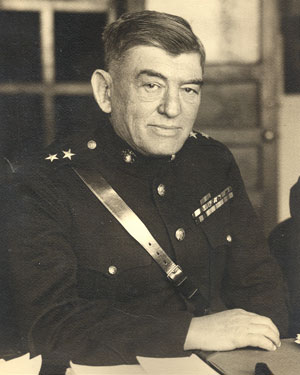 John Archer Lejeune (1867-1942) — Often described as "the greatest of all Leathernecks," Lt. Gen. John A. Lejeune was the 13th Commandant of the U.S. Marine Corps (1920-1929) and the namesake of Camp Lejeune in North Carolina. An 1888 graduate of the Naval Academy, he commanded the Marine Guard aboard the USS Cincinnati during the Spanish-American War. Between 1907 and 1914, he held commands during several U.S. military actions in foreign countries, including interventions in Panama and Mexico. During World War I, Lejeune commanded the newly operational Marine Barracks at Quantico, Virginia, prior to his deployment to France in June 1918. Promoted to major general that July, he assumed command of the U.S. Army’s 2nd Infantry Division. For his World War I service, Lejeune received the Distinguished Service Medal, the Navy Distinguished Service Medal and the French Croix de Guerre. On July 1, 1920, Lejeune became Commandant of the Marine Corps. He served in that position until 1929, when he retired and became superintendent of the Virginia Military Institute. During Lejeune’s term as commandant, he strengthened the Corps’ readiness and national reputation as an invaluable military asset. He also started the tradition of the Marine Corps Birthday Ball, an annual celebration of the Corps’ establishment. Lejeune and his wife are buried with their daughter, Eugenia, who served in the Marine Corps Reserve during World War II. (Section 6, Grave 5682)
John Archer Lejeune (1867-1942) — Often described as "the greatest of all Leathernecks," Lt. Gen. John A. Lejeune was the 13th Commandant of the U.S. Marine Corps (1920-1929) and the namesake of Camp Lejeune in North Carolina. An 1888 graduate of the Naval Academy, he commanded the Marine Guard aboard the USS Cincinnati during the Spanish-American War. Between 1907 and 1914, he held commands during several U.S. military actions in foreign countries, including interventions in Panama and Mexico. During World War I, Lejeune commanded the newly operational Marine Barracks at Quantico, Virginia, prior to his deployment to France in June 1918. Promoted to major general that July, he assumed command of the U.S. Army’s 2nd Infantry Division. For his World War I service, Lejeune received the Distinguished Service Medal, the Navy Distinguished Service Medal and the French Croix de Guerre. On July 1, 1920, Lejeune became Commandant of the Marine Corps. He served in that position until 1929, when he retired and became superintendent of the Virginia Military Institute. During Lejeune’s term as commandant, he strengthened the Corps’ readiness and national reputation as an invaluable military asset. He also started the tradition of the Marine Corps Birthday Ball, an annual celebration of the Corps’ establishment. Lejeune and his wife are buried with their daughter, Eugenia, who served in the Marine Corps Reserve during World War II. (Section 6, Grave 5682)
Lee Marvin (1924-1987) — Lee Marvin acted in 56 films, most memorably as a villain or "tough guy" in westerns and action movies. Although his namesake was Robert E. Lee, a distant relation, Marvin did not come from a military family; his father was a New York advertising executive, his mother a fashion editor. He joined the Marines at age 18 and served during World War II as a scout sniper in the Pacific. Hit in the spine by machine gun fire during the battle for Saipan, he spent a year in rehabilitation and received a Purple Heart, among other decorations. Marvin's notable films included "The Man Who Shot Liberty Valance" (1962), "The Killers" (1964), "The Dirty Dozen" (1967) and "Cat Ballou" (1965), for which he received an Academy Award. "I applied a lot of what I learned in the Marines to my films," he said in a 1985 interview. (Section 7A, Grave 176)
Megan McClung (1972-2006) — Maj. Megan M. McClung was the first female Marine officer to be killed in Operation Iraqi Freedom, and the first female graduate of the United States Naval Academy to be killed in action. A 1995 graduate of the Naval Academy, McClung was commissioned as a second lieutenant in the Marine Corps. After completing the Public Affairs Officer Qualification Course in 1996, she served as the public affairs officer and media officer at Marine Corps Base Camp Pendleton. Over the next ten years, she held public affairs positions in the Marine Corps, the Marine Reserves and, in 2004, a one-year civilian position in public relations for Kellogg, Brown and Root, a military logistics contractor, in Baghdad, Iraq. After returning to active duty in 2005, she deployed to Al Anbar Province, Iraq, with I Marine Expeditionary Force in February 2006. While serving as public affairs plans officer at Camp Fallujah, McClung volunteered for duty with the U.S. Army’s 1st Brigade Combat Team, 1st Armored Division. On December 6, 2006, while escorting “Newsweek” journalists in the city of Ramadi, she was killed instantly when her Humvee struck an improvised explosive device. McClung’s awards include the Bronze Star, the Purple Heart, the Navy and Marine Corps Commendation Medal and the National Defense Service Medal. Her headstone is engraved with her personal motto: “Be Bold. Be Brief. Be Gone.” (Section 60, Grave 8514)
Catherine Murray (1917-2017) — On December 7, 1941, Catherine Murray decided to enlist in the military after hearing President Franklin D. Roosevelt’s radio announcement of the Japanese attack on Pearl Harbor. She served with a motor transport unit in the Marine Corps Women’s Reserve. After World War II, Murray was one of 50 women who continued to actively serve in the Marines. For the next two decades, she served at 15 duty stations and assumed a wide range of responsibilities. While stationed at Quantico, she wrote the manuals used to train future female Marines. In 1962, Murray became the first enlisted female Marine to retire from active duty, at the rank of master sergeant. She died in 2017 at the age of 100. (Section 60, Grave 1170)
 Frank E. Petersen Jr. (1932-2015) — In 1952, Frank E. Peterson Jr. became the first African American aviator in the Marine Corps; twenty years later, he became the first African American Marine general. The son of an immigrant from St. Croix, Petersen grew up in segregated Topeka, Kansas. He enlisted in the Navy in 1950 and, after completing flight training, accepted a commission as a second lieutenant in the Marine Corps. During the Korean and Vietnam Wars, Petersen flew more than 350 combat missions and earned 20 medals for bravery in combat, as well as the Distinguished Service Medal. Petersen achieved a number of additional “firsts” during his career: during the Vietnam War, he became the first African American Marine to command a fighter squadron, and in 1986 he became the first African American commander of Marine Corps Base Quantico. He retired from the Marine Corps in 1988 as a lieutenant general. (Section 33, Grave 4571)
Frank E. Petersen Jr. (1932-2015) — In 1952, Frank E. Peterson Jr. became the first African American aviator in the Marine Corps; twenty years later, he became the first African American Marine general. The son of an immigrant from St. Croix, Petersen grew up in segregated Topeka, Kansas. He enlisted in the Navy in 1950 and, after completing flight training, accepted a commission as a second lieutenant in the Marine Corps. During the Korean and Vietnam Wars, Petersen flew more than 350 combat missions and earned 20 medals for bravery in combat, as well as the Distinguished Service Medal. Petersen achieved a number of additional “firsts” during his career: during the Vietnam War, he became the first African American Marine to command a fighter squadron, and in 1986 he became the first African American commander of Marine Corps Base Quantico. He retired from the Marine Corps in 1988 as a lieutenant general. (Section 33, Grave 4571)
► Explore our "African American Firsts" walking tour, part of ANC's new Education Program.
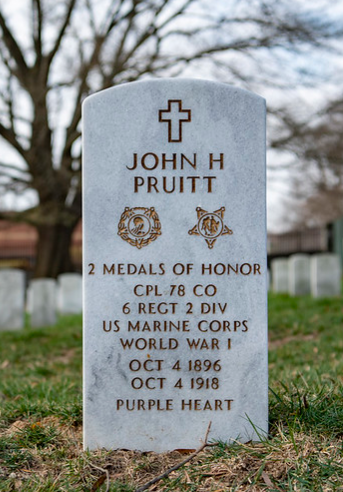 John Pruitt (1896-1918) — Killed in action during World War I, John Pruitt was posthumously awarded both the Army Medal of Honor and the Navy Medal of Honor. After enlisting as a private in the Marine Corps in May 1917, he deployed to northern France with the 78th Company, 6th Regiment. The regiment fought in several major Western Front battles, including Château-Thierry and Belleau Wood, where Pruitt was seriously injured in a gas attack. On October 3, 1918, while attempting to capture the Blanc Mont Ridge during the St. Mihiel Offensive, Pruitt advanced towards the German line and single-handedly killed two German soldiers and captured 40 others. Later that day, Pruitt was mortally hit by enemy shellfire. He died the next day, his 22nd birthday. In addition to the Army and Navy Medals of Honor, Pruitt’s posthumous commendations included the French Croix de Guerre and the Italian Cross of Military Valor. (Section 18, Grave 2453)
John Pruitt (1896-1918) — Killed in action during World War I, John Pruitt was posthumously awarded both the Army Medal of Honor and the Navy Medal of Honor. After enlisting as a private in the Marine Corps in May 1917, he deployed to northern France with the 78th Company, 6th Regiment. The regiment fought in several major Western Front battles, including Château-Thierry and Belleau Wood, where Pruitt was seriously injured in a gas attack. On October 3, 1918, while attempting to capture the Blanc Mont Ridge during the St. Mihiel Offensive, Pruitt advanced towards the German line and single-handedly killed two German soldiers and captured 40 others. Later that day, Pruitt was mortally hit by enemy shellfire. He died the next day, his 22nd birthday. In addition to the Army and Navy Medals of Honor, Pruitt’s posthumous commendations included the French Croix de Guerre and the Italian Cross of Military Valor. (Section 18, Grave 2453)
David M. Shoup (1904-1983) — General David M. Shoup served as the 22nd commandant of the Marine Corps, from 1960 through 1963. During World War II, he received the Medal of Honor as commanding officer of all Marine Corps troops in the Battle of Tarawa (November 20-23, 1943), one of the deadliest Pacific Theater battles. His report from Tarawa stated simply: "Casualties many; Percentage of dead not known; Combat efficiency; we are winning." Later, Shoup became known as a critic of the Vietnam War. (Section 7A, Grave 189)
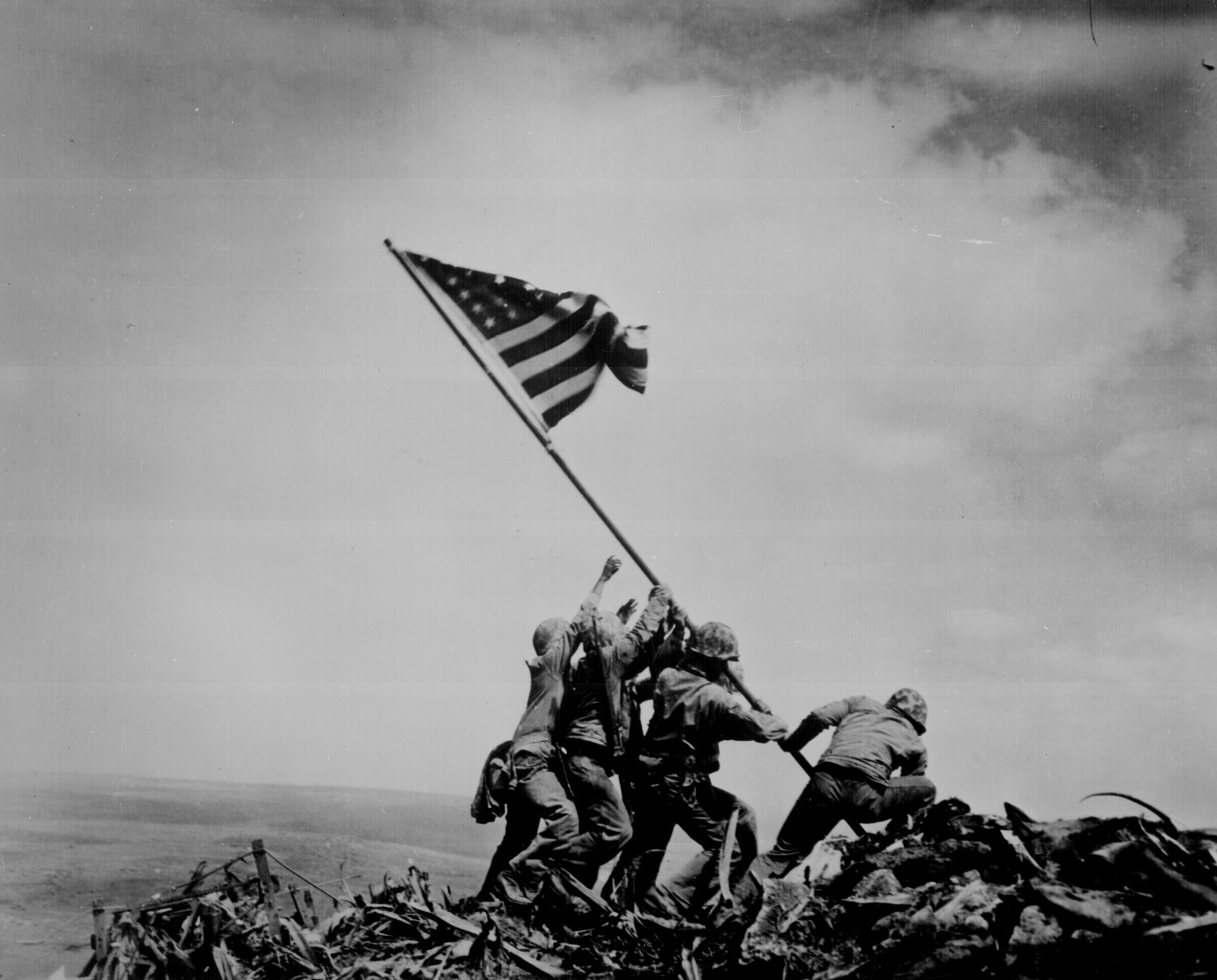
Michael Strank (1919-1945) — Born in Slovakia, Strank immigrated to Pennsylvania with his parents as a child and enlisted in the Marines in 1939. He was one of six Marines depicted in AP photographer Joe Rosenthal's iconic photograph, "Raising the Flag on Iwo Jima," which inspired the Marine Corps War Memorial. Taken on February 23, 1945, the image depicts Strank and others in his unit (Company E, 2nd Battalion, 5th Marine Division) raising the American flag on Mount Suribachi during the Battle of Iwo Jima. Strank was killed in action one week after the photograph was taken. (Section 12, Grave 7179)
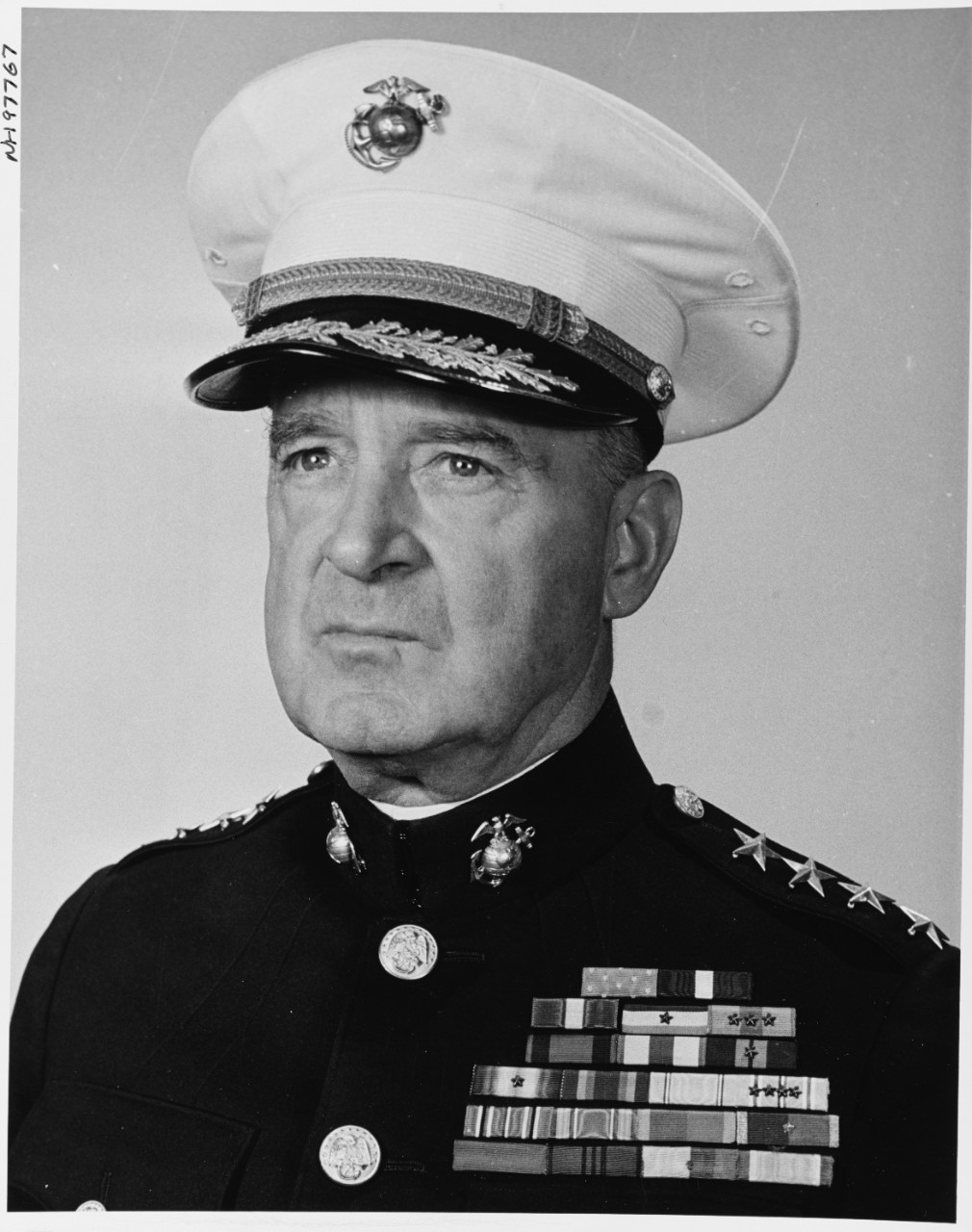 Alexander Vandegrift (1887-1973) — Commissioned as a second lieutenant in the Marine Corps in 1909, Alexander Vandegrift served in Mexico, Haiti, Nicaragua and China, as well as various posts in the United States, in the 1910s through 1930s. He was promoted to major general in March 1942, and subsequently commanded the 1st Marine Division in the Guadalcanal (Solomon Islands) campaign of 1942-1943—the Allies’ first large-scale offensive, and first victory, in the Pacific Theater. Vandegrift earned the Medal of Honor for his leadership in the Guadalcanal campaign, becoming the first Marine to earn both the Medal of Honor and the Navy Cross. In 1944, he became the 18th Commandant of the Marine Corps and advanced to the rank of lieutenant general, becoming the first active-duty Marine to attain four-star rank. After retiring in 1948, he authored a memoir chronicling his nearly four decades of military service. (Section 2, Grave 4965-B)
Alexander Vandegrift (1887-1973) — Commissioned as a second lieutenant in the Marine Corps in 1909, Alexander Vandegrift served in Mexico, Haiti, Nicaragua and China, as well as various posts in the United States, in the 1910s through 1930s. He was promoted to major general in March 1942, and subsequently commanded the 1st Marine Division in the Guadalcanal (Solomon Islands) campaign of 1942-1943—the Allies’ first large-scale offensive, and first victory, in the Pacific Theater. Vandegrift earned the Medal of Honor for his leadership in the Guadalcanal campaign, becoming the first Marine to earn both the Medal of Honor and the Navy Cross. In 1944, he became the 18th Commandant of the Marine Corps and advanced to the rank of lieutenant general, becoming the first active-duty Marine to attain four-star rank. After retiring in 1948, he authored a memoir chronicling his nearly four decades of military service. (Section 2, Grave 4965-B)